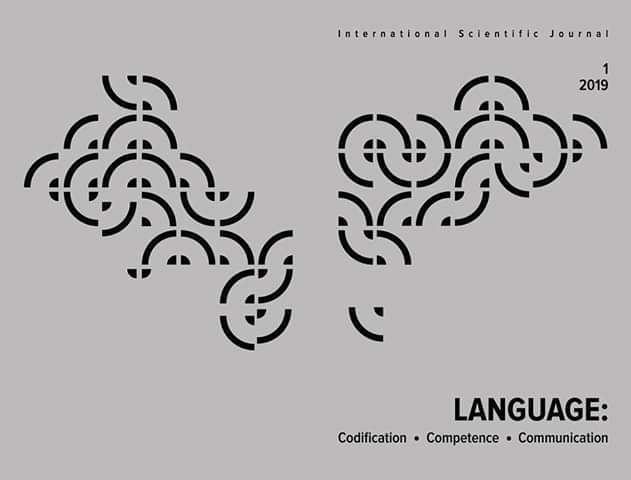SEMANTIC DIVISION OF CLASSICAL AND MODERN NOVELS’ CONDITIONAL STRUCTURE IN THE CONTEXT OF TRANSLATION
DOI:
https://doi.org/10.24025/2707-0573.1.2019.169317Abstract
Problem Statement: In modern linguistics a certain experience has been accumulated in studying expressions with conditional relations. However, there is no consensus nowadays concerning identification of speech fragment where the condition is explicated. Therefore, the necessity exists to extend an understanding of the conditional sentence, consider its structure in the aspect of translation as well as conduct semantic division of conditional sentences of the novels “Pride and Prejudice” by Jane Austen and “Me Before You” by Jojo Moyes.
Purpose: To study semantic peculiarities of conditional sentences functioning in the English classical and modern novels, find out their common and different features as well as reveal the difficulties and specific features of English conditional sentences’ translation into Ukrainian.
Methods: Analysis, synthesis, induction method, quantitative method, continuous sampling method, descriptive method, contextual analysis and pragmatic analysis method, comparative method.
Discussion: In the mentioned novels in terms of grammar five types of conditional sentences were distinguished: conditional sentences of zero, first, second and third type, and mixed type conditional sentences. In total 271 units were considered in the classical novel and 145 units in the modern novel were taken into consideration. Having analysed semantic peculiarities of different types of conditional sentences in the novels, we have distinguished certain categories of conditional sentences with respect to connotation, in particular: conditional sentences with positive, neutral and negative connotation.
Results: The division of conditional sentences with reference to connotation enabled us to conclude that the grammatical type of conditional sentences determines, to some extent, its semantic colouring, though it does not define the connotation of the sentence as a whole. Sentences with the structure I wish comprise a separate semantic group.
The article proposes several tendencies in modern translation of English conditional sentences.
The studying of conditional sentence communicative function rendering during translation conditional sentences from English into Ukrainian is supposed to be challenging in as much as the communicative function of something being informed is one of the most essential functions for the achievement of pragmatic impact on the reader.
Key words: conditional sentence, connotation, classic novel, translation.
References
Грецкая, Е. С. (2004). Роль подчинительных союзов в формировании модальности сложноподчиненных предложений со значением обусловленности (условные и причинные конструкции): дисс. …канд. филол. наук. Липецкий государственный педагогический университет. Липецк.
Гуревич, В. В. (2003). Теоретическая грамматика английского языка. Сравнительная типология английского и русского языков: учеб. пособие. Москва: Флинта: Наука.
Кхеліл, О. І. (2016). Складнопідрядне речення з підрядним умови в середньоанглійській мові: функціональний та структурний аспекти: дис…канд. філол наук. Житомирський державний університет імені Івана Франка. Житомир.
Кхеліл, О. І. (2015). Формально синтаксична характеристика сполучника домінантного типу в середньоанглійських умовних реченнях. Вісник Сумського державного університету. Філологічні трактати, Т. 7, 3, 47–56.
Кхеліл, О. І. (2015). Дослідження умовних речень у сучасних граматичних студіях. Наукові записки Національної академії «Острозька академія», 58, 157–160.
Мойєс, Дж. (2017). До зустрічі з тобою / пер. з англ. Н. Хаєцької. Харків: Клуб сімейного дозвілля.
Остін, Д. (2015). Гордість і упередження / пер. з англ. Г. Лелів. Київ: Знання.
Почепцов, Г. Г. (1971). Конструктивный анализ структуры предложения. Киев: Вища школа.
Храковский, В. С. (1998). Теоретический анализ условных конструкций (семантика, исчисление, типология). СПб: Наука.
Austen, J. (2015). Pride and Prejudice. Kyiv: Znannia.
Comrie, B. (1981). Language universals and linguistic typology: syntax and morphology. Oxford: Blackwell, Chicago: University of Chicago Press.
Declerk, R., Reed, S. (2001). Conditionals: a comprehensive empirical analysis. Berlin; New York: Mouton de Gruyter.
Greenberg, J. H. (1962). Some Universals of Grammar with Particular Reference to the Order of Meaningful Elements. Universals of Language (pp. 110-113). London: MIT Press.
Moyes, J. (2012). Me before you. London: Penguin.
Downloads
Published
Issue
Section
License
Copyright (c) 2019 Language: codification, competence, communication

This work is licensed under a Creative Commons Attribution-NonCommercial 4.0 International License.
Authors hold full copyright and at the same time they transfer the publishing rights to the journal. The author of a published article has the right to distribute it, post the work in the electronic repository of his/her institution, publish as a part of a monograph, etc. with a required link to the place (output) of its first publication.
The authors confirm that the scientific article submitted for publication has not previously been published and has not been submitted to the editorial office of other journals.
If you have any questions, please contact us:
email: ukrmova@chdtu.edu.ua, o.pchelintseva@chdtu.edu.ua
Viber / WhatsApp: +38 093 789 09 27


